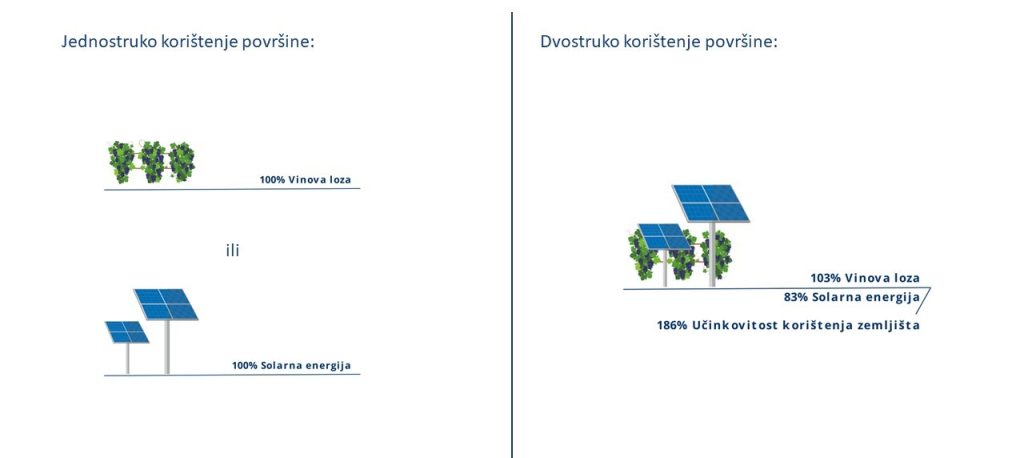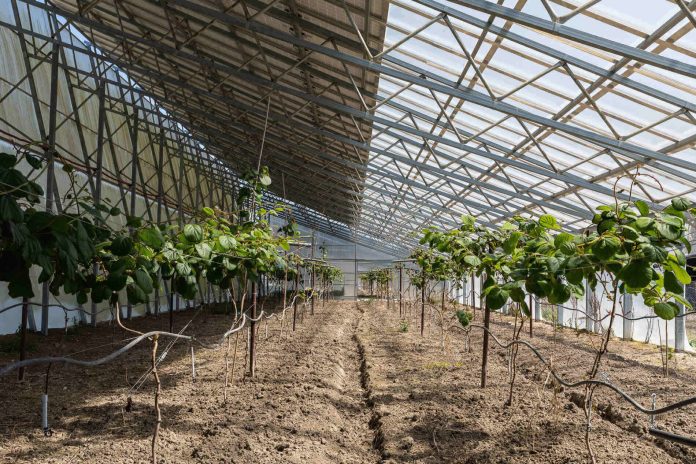There are fewer and fewer usable land surfaces for food production, while the global population continues to grow, requiring more food to sustain. Due to frequent droughts, floods, and storms, food production is becoming increasingly threatened and expensive year by year. In recent decades, we have witnessed destroyed crops, depleted soil quality, and disrupted plant growth cycles. However, this is just the beginning, as scientists warn.
Consumers are also becoming aware of the consequences of climate change and are increasingly demanding that food production turns to environmentally sustainable practices and the use of renewable energy sources. However, the technological and civilizational transition to renewable sources also requires the use of significant land areas. Nevertheless, there is a unique way that combines agriculture and renewable energy production.
When considering the context of food production security, dual uses of agricultural land emerge as an optimal solution. Simultaneous use of land for agriculture and solar energy production allows for more efficient utilization of agricultural land without sacrificing agricultural productivity.
One of the systems that can enable this is agrisolar.
This new and innovative concept optimizes land use efficiency, and thanks to its flexible nature, it can adapt to various agricultural systems, crops, and locations.

How to measure the economic efficiency of agrisolar systems?
Before introducing agrisolar systems into agricultural production, it is crucial to understand their economic feasibility and potential, which requires an analysis of the specific characteristics of each agricultural system, including potential compromises. Whether agrisolar systems are being introduced on a large agricultural complex or a small farm, an analysis that includes the aspect of economic efficiency is required.
But how can it be measured?
One way is through the formula for calculating the Land Equivalent Ratio (LER), which looks like this:

“Agro” refers to the amount of food we can produce on land, while “OIE” refers to the amount of electrical energy we can generate. “Dvojno korištenje” (Dual-use) refers to agrisolar systems, while “jednostruko korištenje” (single-use) refers to traditional systems that use land solely for food production. With the help of this model, we can compare how efficiently we use land in dual systems compared to traditional ones. If the Land Equivalent Ratio (LER) is greater than 1, it means that the dual system uses land more efficiently than the traditional one.
When it comes to economic sustainability, it is essential to consider the potential for profit generation. The Profit Index (PI) is one way to quantify the benefits of dual land use compared to a traditional approach. It calculates the ratio of profit generated by dual use to profit generated by single use. The formula for calculating the Profit Index (PI) can be created similarly to LER, but instead of the quantity of production, it includes revenues from the sale of agricultural products and electricity.
The use of agrisolar, or dual land use, can significantly reduce the overall energy consumption and costs of agricultural enterprises while ensuring greater energy independence. Cost savings result in increased net profit for the agricultural business while maintaining uninterrupted agricultural production. Taking into account the price of electricity and the potential for selling excess energy, agrisolar systems can also generate significant additional income for farm owners.
It is important to emphasize once again that the introduction of these systems is not a choice between food production and renewable energy. On the contrary, we have a historic opportunity to integrate them, creating systems that are both economically and environmentally sustainable.
Agrisolar represents an exciting step forward and revolutionizes agricultural enterprises, allowing them to optimize land use, protect their crops from weather-related challenges, generate renewable energy, meet their energy needs, and diversify their business, contributing to secure food production and a greener future for generations to come.
You can read more about this topic in the “Study on the Potential of Solar Energy Use in the Agricultural Sector and Freshwater Aquaculture Sector in Croatia,” which will be presented by OIEH on September 6, 2023.










